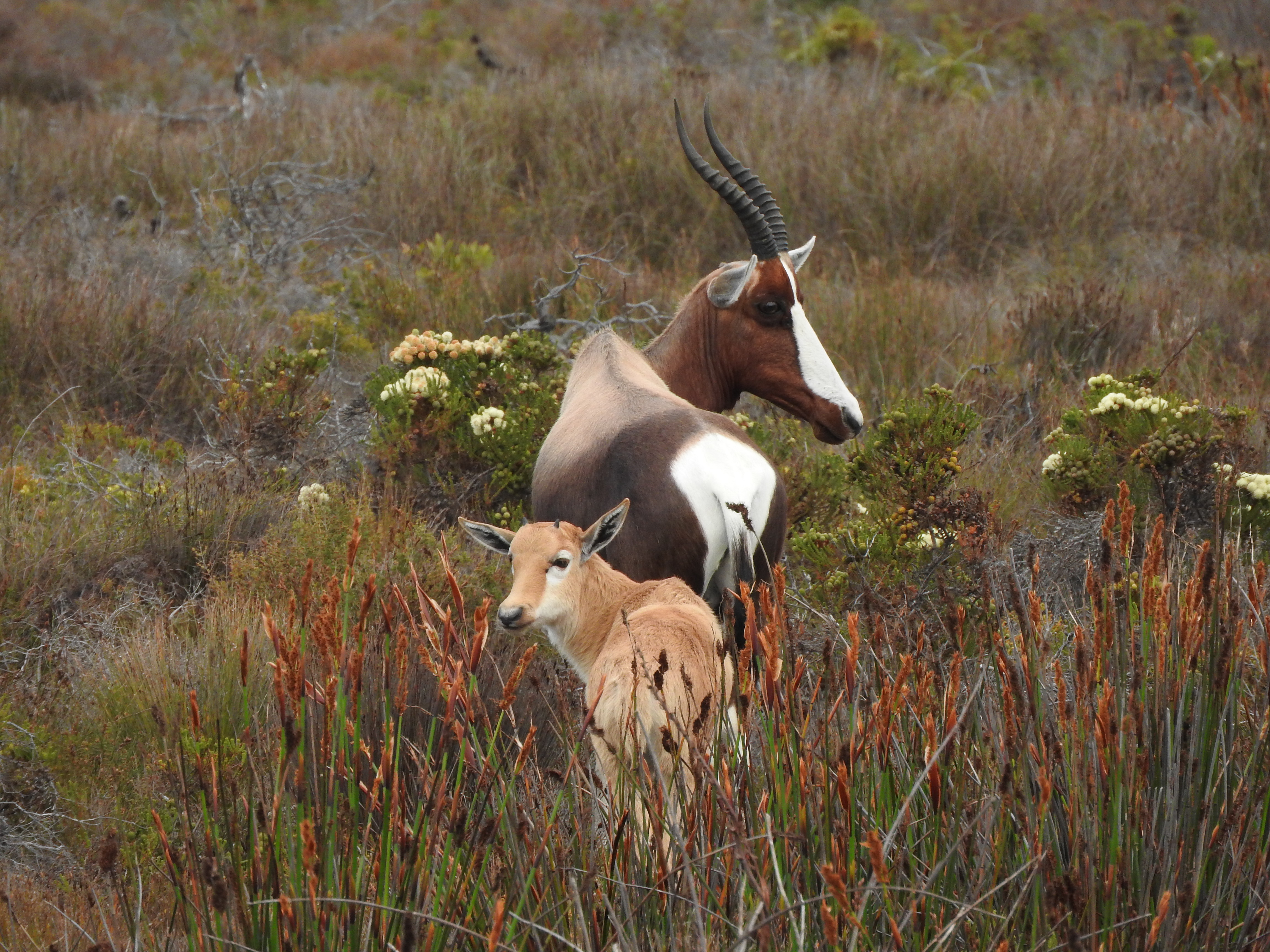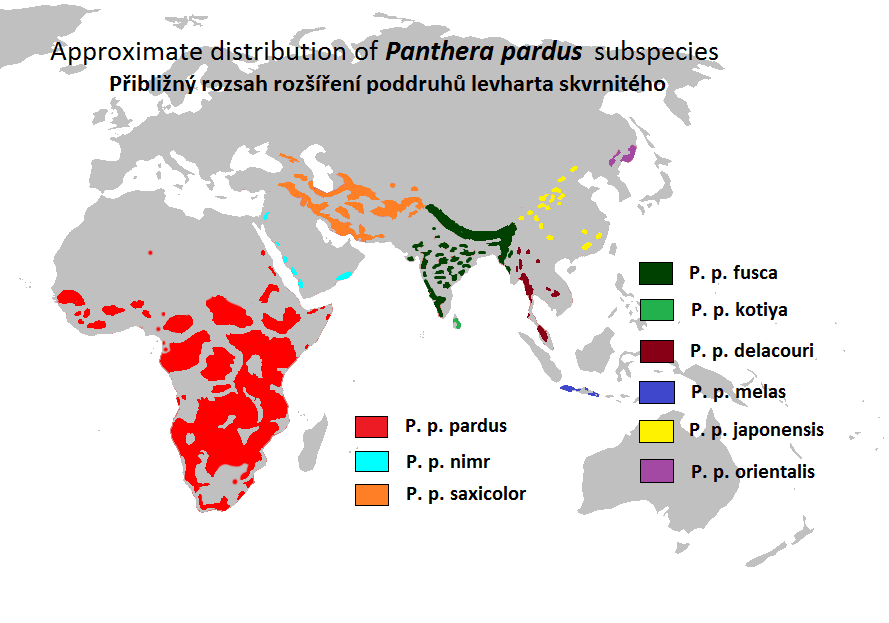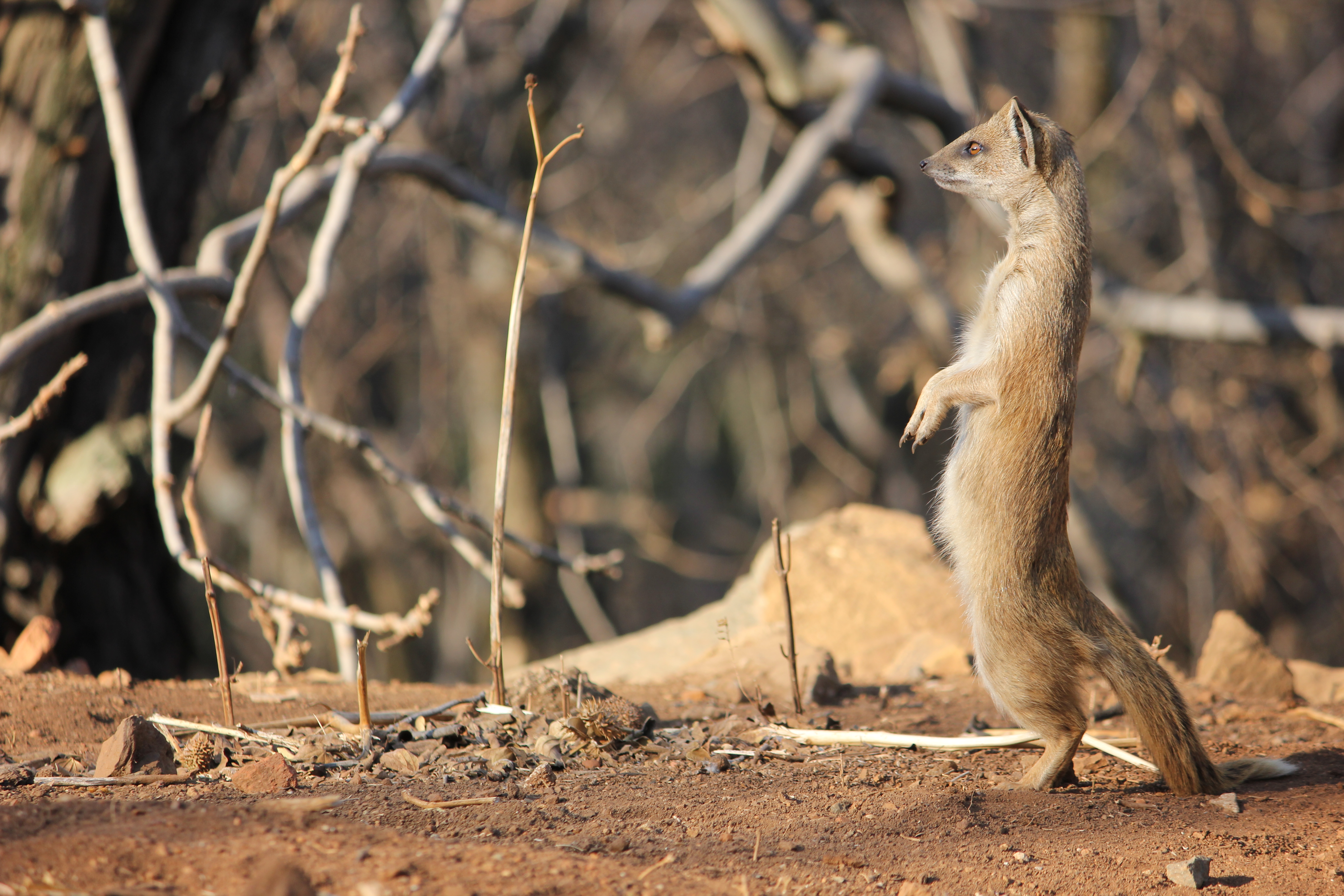|
De Hoop Nature Reserve
De Hoop Nature Reserve is a nature reserve in the Western Cape Province of South Africa. It lies three hours from Cape Town in the Overberg region, near Cape Agulhas, the southern tip of Africa. Approximately in area, it is one of the largest natural areas managed by CapeNature. De Hoop is one of the components of the " Cape Floral Region Protected Areas" World Heritage Site. The De Hoop Marine Protected Area extends three nautical miles out to sea from the coastline of the nature reserve. History In the mid twentieth-century, the South African government bought the farms ''De Hoop'' and ''Windhoek'' with the intention to establish a wildlife farm for endangered species. In the mid 1970s, the area became dedicated to the conservation of the Cape Floral ecosystem, and became the southernmost nature reserve in Africa. It was declared a UNESCO World Heritage Site in 2004. Climate De Hoop Nature Reserve's climate is Mediterranean, with warm summers and mild winters. The rese ... [...More Info...] [...Related Items...] OR: [Wikipedia] [Google] [Baidu] |
African Black Oystercatcher
The African oystercatcher or African black oystercatcher (''Haematopus moquini'') is a large charismatic wader resident to the mainland coasts and offshore islands of southern Africa. This oystercatcher has a population of over 6,000 adults, which breed between November and April. The scientific name ''moquini'' commemorates the French naturalist Alfred Moquin-Tandon who discovered and named this species before Bonaparte. Description The African oystercatcher is a large, noisy wader, with completely black plumage, red legs and a strong broad red bill. The sexes are similar in appearance, however, females are larger and have a slightly longer beak than males. Juveniles have soft grey plumage and do not express the characteristic red legs and beak until after they fledged. The call is a distinctive loud piping, very similar to Eurasian oystercatchers. As the Eurasian oystercatcher is a migratory species they only occur as a vagrant in southern Africa, and its black-and-white plum ... [...More Info...] [...Related Items...] OR: [Wikipedia] [Google] [Baidu] |
Bontebok
The bontebok (''Damaliscus pygargus'') is an antelope found in South Africa, Lesotho and Namibia. ''D. pygargus'' has two subspecies; the nominate subspecies (''D. p. pygargus''), occurring naturally in the Fynbos and Renosterveld areas of the Western Cape, and the blesbok (''D. p. phillipsi'') occurring in the Highveld. The bontebok is related to the common tsessebe. Description The bontebok is a tall, medium-sized antelope. They typically stand high at the shoulder and measure along the head and body. The tail can range from . Body mass can vary from . Males are slightly larger and noticeably heavier than females.Burnie, D. and Wilson, D.E. (eds.), ''Animal: The Definitive Visual Guide to the World's Wildlife''. DK Adult (2005), The bontebok is a chocolate brown colour, with a white underside and a white stripe from the forehead to the tip of the nose, although there is a brown stripe across the white near the eyes in most blesbok. The bontebok also has a distinctive whit ... [...More Info...] [...Related Items...] OR: [Wikipedia] [Google] [Baidu] |
Provincial Nature Reserves Of The Western Cape
Provincial may refer to: Government & Administration * Provincial capitals, an administrative sub-national capital of a country * Provincial city (other) * Provincial minister (other) * Provincial Secretary, a position in Canadian government * Member of Provincial Parliament (other), a title for legislators in Ontario, Canada as well as Eastern Cape Province, South Africa. * Provincial council (other), various meanings * Sub-provincial city in the People's Republic of China Companies * The Provincial sector of British Rail, which was later renamed Regional Railways * Provincial Airlines, a Canadian airline * Provincial Insurance Company, a former insurance company in the United Kingdom Other Uses * Provincial Osorno, a football club from Chile * Provincial examinations, a school-leaving exam in British Columbia, Canada * A provincial superior of a religious order * Provincial park, the equivalent of national parks in the Canadian provinces * ... [...More Info...] [...Related Items...] OR: [Wikipedia] [Google] [Baidu] |
Protected Areas Of South Africa
The protected areas of South Africa include national parks and marine protected areas managed by the national government, public nature reserves managed by provincial and local governments, and private nature reserves managed by private landowners. Most protected areas are intended for the conservation of flora and fauna. National parks are maintained by South African National Parks (''SANParks''). A number of national parks have been incorporated in transfrontier conservation areas. Protected areas may also be protected for their value and importance as historical, cultural heritage or scientific sites. More information on these can be found in the list of heritage sites in South Africa. Special Nature Reserves Special nature reserves are highly protected areas from which all people and human activities are excluded, except for conservation and scientific research. The Prince Edward Islands, which are South African territories in the Southern Ocean, have been declared as ... [...More Info...] [...Related Items...] OR: [Wikipedia] [Google] [Baidu] |
Denel Overberg Test Range
The Denel Overberg Test Range is a weapons systems testing facility in the Overberg region on the south coast of South Africa, near Arniston, Western Cape. It includes launch pads and tracking systems. It was used to test the RSA series of Israeli-South African missiles until cancellation in 1992; since then it has been used by a variety of countries and clients. Until 31 March 2011, it was known as simply the Overberg Test Range or OTB (Afrikaans abbreviation for ''Overberg Toetsbaan''). Facilities Facilities at the site include missile launch pads, tracking radar, optical missile tracking systems, cinetheodolites as well as the use of Overberg Air Force Base, home of the South African Air Force Test Flight and Development Centre. The layout appears to mirror the testing site at Palmachim, suggesting Israeli input in the design process. Instrumentation includes: * IRIG timecode telecommand transmission * Precision instrumentation radars with velocity measurement and abil ... [...More Info...] [...Related Items...] OR: [Wikipedia] [Google] [Baidu] |
Cape Vulture
The Cape vulture (''Gyps coprotheres''), also known as Cape griffon and Kolbe's vulture, is an Old World vulture in the family Accipitridae. It is endemic to southern Africa, and lives mainly in South Africa, Lesotho, Botswana, and in some parts of northern Namibia. It nests on cliffs and lays one egg per year. In 2015, it had been classified as endangered species, Endangered on the IUCN Red List, but was down-listed to Vulnerable species, Vulnerable in 2021 as some populations increased and have been stable since about 2016. Description This large vulture is of a creamy-buff colour, with contrasting dark flight and tail feathers. The adult is paler than the juvenile, and its underwing coverts can appear almost white at a distance. The head and neck are near-naked. The eyes are yellowish, and the bill is black. Juveniles and immatures are generally darker and more streaked, with brown to orange eyes and red necks. It closely resembles the white-backed vulture, however it is lar ... [...More Info...] [...Related Items...] OR: [Wikipedia] [Google] [Baidu] |
Southern Right Whale
The southern right whale (''Eubalaena australis'') is a baleen whale, one of three species classified as right whales belonging to the genus ''Eubalaena''. Southern right whales inhabit oceans south of the Equator, between the latitudes of 20° and 60° south. In 2009 the global population was estimated to be approximately 13,600. Taxonomy Right whales were first classified in the genus '' Balaena'' in 1758 by Carl Linnaeus, who at the time considered all right whales (including the bowhead) to be a single species. In the 19th and 20th centuries the family Balaenidae was the subject of great taxonometric debate. Authorities have repeatedly recategorised the three populations of right whale plus the bowhead whale, as one, two, three or four species, either in a single genus or in two separate genera. In the early whaling days, they were all thought to be a single species, ''Balaena mysticetus''. The southern right whale was initially described as ''Balaena australis'' by Des ... [...More Info...] [...Related Items...] OR: [Wikipedia] [Google] [Baidu] |
Leopard
The leopard (''Panthera pardus'') is one of the five extant cat species in the genus ''Panthera''. It has a pale yellowish to dark golden fur with dark spots grouped in rosettes. Its body is slender and muscular reaching a length of with a long tail and a shoulder height of . Males typically weigh , and females . The leopard was first described in 1758, and several subspecies were proposed in the 19th and 20th centuries. Today, eight subspecies are recognised in its wide range in Africa and Asia. It initially evolved in Africa during the Early Pleistocene, before migrating into Eurasia around the Early–Middle Pleistocene transition. Leopards were formerly present across Europe, but became extinct in the region at around the end of the Late Pleistocene-early Holocene. The leopard is adapted to a variety of habitats ranging from rainforest to steppe, including arid and montane areas. It is an opportunistic predator, hunting mostly ungulates and primates. It relies on it ... [...More Info...] [...Related Items...] OR: [Wikipedia] [Google] [Baidu] |
Caracal
The caracal (''Caracal caracal'') () is a medium-sized Felidae, wild cat native to Africa, the Middle East, Central Asia, and arid areas of Pakistan and northwestern India. It is characterised by a robust build, long legs, a short face, long tufted ears, relatively short tail, and long canine teeth. Its coat is uniformly reddish tan or sandy, while the ventral parts are lighter with small reddish markings. It reaches at the shoulder and weighs . It was first scientific description, scientifically described by German naturalist Johann Christian Daniel von Schreber in 1776. Three subspecies are recognised. Typically nocturnality, nocturnal, the caracal is highly secretive and difficult to observe. It is territory (animal), territorial, and lives mainly alone or in pairs. The caracal is a carnivore that typically preys upon birds, rodents, and other small mammals. It can leap higher than and catch birds in midair. It stalks its prey until it is within of it, after which it ru ... [...More Info...] [...Related Items...] OR: [Wikipedia] [Google] [Baidu] |
Yellow Mongoose
The yellow mongoose (''Cynictis penicillata''), sometimes referred to as the red meerkat, is a member of the mongoose family. It averages about in weight and about in length. It lives in open country, semi-desert scrubland and grasslands in Angola, Botswana, South Africa, Namibia, and Zimbabwe. It is the only species in the genus ''Cynictis''. Taxonomy ''Herpestes penicillatus'' was the scientific name proposed by Georges Cuvier in 1829 for a mongoose specimen from the Cape. The generic name ''Cynictis'' was proposed by William Ogilby in 1833 for a specimen collected in Kaffraria. The yellow mongoose is the only member of the genus ''Cynictis''; 12 subspecies have been described, but their status is unclear. At least four subspecies have been recognised: * Grizzled yellow mongoose (''C. p. coombsi'') * Natal yellow mongoose (''C. p. natalensis'') * Southern yellow mongoose (''C. p. penicillata'') Characteristics In general, the yellow mongoose has lighter highlights on ... [...More Info...] [...Related Items...] OR: [Wikipedia] [Google] [Baidu] |
Chacma Baboon
The chacma baboon (''Papio ursinus''), also known as the Cape baboon, is, like all other baboons, from the Old World monkey family. It is one of the largest of all monkeys. Located primarily in southern Africa, the chacma baboon has a wide variety of social behaviours, including a dominance hierarchy, collective foraging, adoption of young by females, and friendship pairings. These behaviors form parts of a complex evolutionary ecology. In general, the species is not threatened, but human population pressure has increased contact between humans and baboons. Hunting, trapping, and accidents kill or remove many baboons from the wild, thereby reducing baboon numbers and disrupting their social structure. Taxonomy Due to Hybrid (biology), hybridization between different baboon (''Papio'') populations across Africa, authors have occasionally grouped the entire radiation as a single species, the hamadryas baboon, ''Papio hamadryas''. Arbitrary boundaries were then used to separate the ... [...More Info...] [...Related Items...] OR: [Wikipedia] [Google] [Baidu] |
Grey Rhebok
The grey rhebok (''Pelea capreolus''), locally known as the ''vaalribbok'' in Afrikaans, is a species of antelope native to South Africa, Lesotho, and Eswatini. The specific name ''capreolus'' is Latin for 'little goat'. Description left, A female at the San Diego Zoo The grey rhebok is a medium-sized antelope weighing with a long neck and narrow ears. The coat is short and dense and coloured in various shades of grey. Only the males carry horns, which are straight, sharp, ringed at the base, and around long. Distribution and habitat Generally confined to the higher areas of Southern Africa, they typically inhabit grassy, montane habitats - for example, sourveld - usually above sea level, and carry a woolly grey coat to insulate them from the cold. They are not strictly limited to this habitat as they can be found in the coastal belt of the Cape, almost at sea level. Reproduction and behaviour The grey rhebok is territorial and maintains its territory by urinating and ... [...More Info...] [...Related Items...] OR: [Wikipedia] [Google] [Baidu] |







